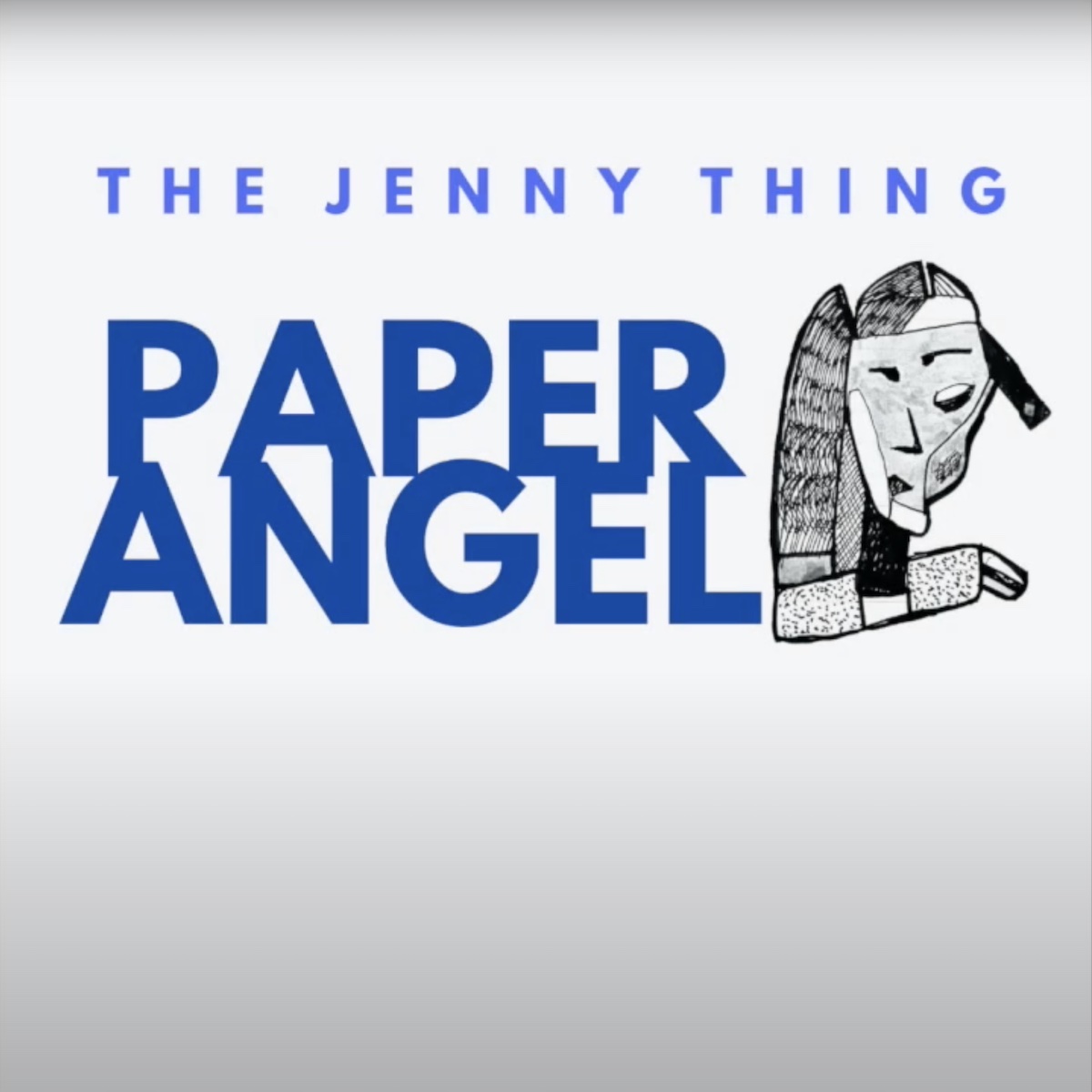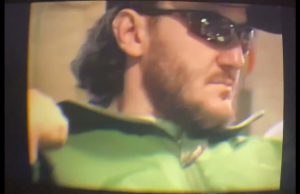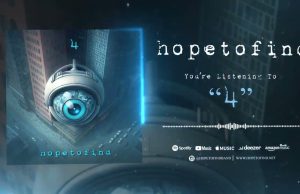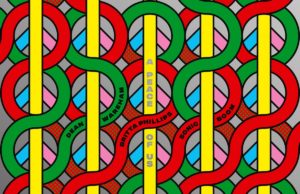The Jenny Thing pen a love letter to a Paper Angel in their blissfully nostalgic new single — premiering exclusively on Tinnitist.
The opening cut of the reunited Berkeley band’s upcoming comeback album American Canyon (due June 18), Paper Angel evokes a sound best described as retro nouveau — a sweeping, cinematic and synth-laced synthesis that recalls the band’s own ’90s beginnings, along with the echoes of contemporaries like Psychedelic Furs and The Cure. Take it from frontman Matt Easton: “Paper Angel picks up a 1990’s U.K.-inspired backbeat but injects it with flamboyant synths and filter sweeps,” he says. “It’s like a techno, cotton-candy version of the real us. I can almost see strobe lights when I listen to it.”
It’s not all he sees and hears. “I often write pop songs on their own terms that also have another layer or two. So Paper Angel feels like a love letter, but it is also the theme song for a superhero who is good but aloof, powerful but unreliable. There are several distinct vocal approaches on Paper Angel: the verses are kind of Mick Jagger meets Lady Gaga, there is a layered, textural passage, and then a ‘shout bridge’ that’s meant to feel live and ecstatic. Listening back, even though I was often in character, the vocals strike me as open and honest. The song ends with a fade section of ambient loops of me singing and playing piano and glockenspiel. This was chopped off of an earlier version of Paper Angel and glued onto this one, leaving some artifacts of the song’s more traditional beginnings.”
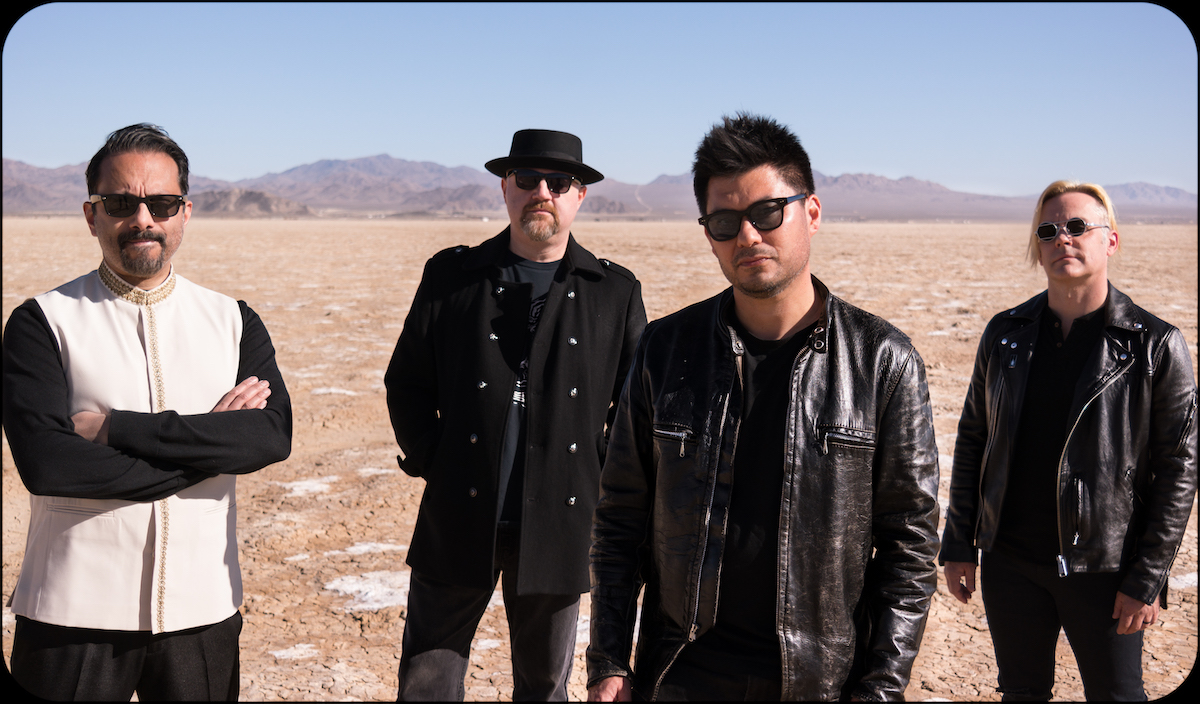
Speaking of beginnings: For those who aren’t already up to speed, The Jenny Thing came together on the Berkeley campus of the University of California in 1991, when singer/guitarist Easton met guitarist Shyam Rao. Matt and drummer Mike Phillips had grown up together, and had been friends with bassist Ehren Becker since junior high. “It took most of freshman year in college before I noticed Shyam had a guitar under his dorm room bed,” Easton recalled. “Turned out he was good, and he knew how to put a demo together. I was a serious pianist and could sing but had little songwriting experience. We were very compatible co-writers and started playing our first handful of songs around dorms and student houses in Berkeley, on acoustic guitars. Once we pulled in Mike and Ehren, we quickly made our way to playing clubs and making an album at Live Oak Studio in Berkeley.”
That first album, Me, was recorded shortly after the band played their first shows. Its semi-acoustic sound was emotionally raw, with a style balanced between pop and youthful experimentation. It became the best-selling independent album of the year at Berkeley’s Rasputin Records. The followup, Closer and Closer to Less, was more polished, drawing on the sounds of The Cure, The Smiths and New Order. The arrangements had been honed by live gigs and captured the band’s onstage energy. According to Easton, “We had national distribution for Closer and Closer, and got quite a bit of college radio play. We toured in a van, up and down California, playing colleges, small clubs and The Roxy and Troubadour in L.A. We even made it through one round of Star Search.”
The last album before the group disbanded was 1999’s Nowhere Near You. It showed them transcending their influences to deliver waves of atmospheric guitars, fragmented rhythms and honest emotion. “We had become a mature band from a production perspective. Knowing it was going to be our last album, we put a lot of heart and soul into it,” Easton notes. “We were only 27, but we began to move on. Shyam moved away for grad school. All of us eventually got jobs and started families, but we stayed in touch.”
Five years ago, they were all living in Northern California again. Easton and Rao began writing songs, recording them in Matt’s home studio in Berkeley. “At first, we were just getting in the room and finishing each other’s demos. Sometimes I’d send Shyam a completed song and he’d hack it up and make a completely different production from it, or he’d come over and we’d pass a guitar back and forth. Then we’d call Mike and Ehren in to track parts, sometimes pre-arranged, sometimes more jammy. It was very non-linear. On three or four songs, we all played live together. Most of the time we worked together in pairs, rotating through the sessions in a random fashion.”

American Canyon, a song that contains an anti-war stance while examining the psychology of war, became the album’s title cut. It’s a synth-heavy track with a dark, popping bass line and ghostly vocals. It describes the desire to cling to love, even in the midst of destruction and chaos. “From that song forward, an intensity in the sound and themes began to build. We realized an album was coming together. We started rewriting completed material, reworking vocal parts and lyrics and pushing everything as far as we could. Through this process, the songs told us they wanted to be an album. Even though we’re still separated by some distance, it became our reunion project.”
The music The Jenny Thing created for American Canyon has a cinematic sweep. Synthesizers, sampled and real drums, and vocal processing were added, and unexpected tempo shifts were made as the songs were rewritten, deconstructed and revamped. And a storyline gradually emerged, enhancing the direction the project was taking. “The songs are not expository, but there is a thread,” Easton said. “Each track describes the characters’ emotional reactions at pivotal points in a story where they struggle with faith and doubt, urgency and resignation, love, hate and mortality.
“I think this moment — this record and our rejuvenation — isn’t so much a turning point; it’s like a rededication point. We want to keep making urgent and emotional stuff and riding the creative wave. Working in my home studio we found that, if we pour ourselves into the writing and the actual moments of performance, we can make almost anything sonically we care to make.”
Check out Paper Angel above, hear more from The Jenny Thing below, and get up to speed on their website, Facebook and Instagram.
